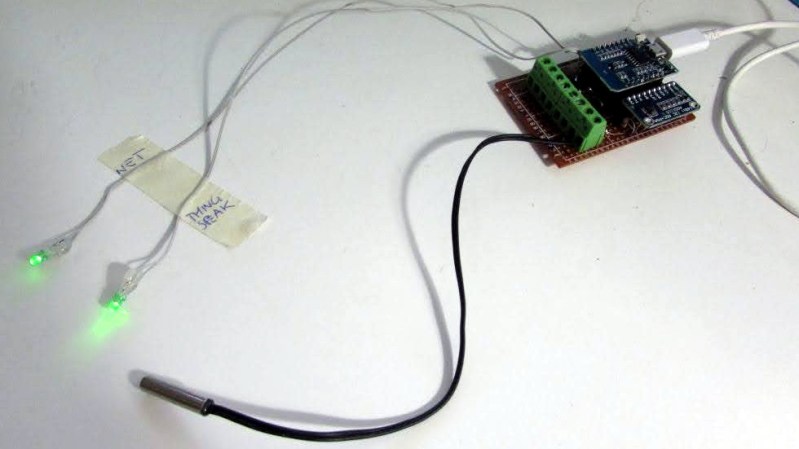There are a lot of IoT solutions and frameworks out there, and [Davide] demonstrates how to make a simple data logging and tracking application with his ESP8266-to-ThingSpeak project, which reads up to four NTC (negative temperature coefficient) thermistors and sends the data to ThinkSpeak over WiFi.
IoT can be a pretty deep rabbit hole, so if you’re looking for a simple project to demonstrate the working parts and provide a starting point, the project’s GitHub repository might help you get started. We’ve also seen ThingSpeak used to track toilet paper sheet usage, which is a nice demonstration of how to interface to a physical object with moving parts.
On the other hand, if you find reading NTC thermistors to be the more interesting part, you’re in luck because [Davide] has more information about that along with a modified ESP8266 Arduino library. Watch a tour of his temperature logging hardware in action in the video, embedded below.















Ntc are so last-century, except if you are working in analog domain with comparators etc.
Using digital ds18b20 one-wire devices are much more precise, and they are factory-calibrated. And you can put many devices on a single input; I’ve had 10 on a single string once.
Really depends on application. For comparison, ds18b20 vs NTC. NTC can be much, much faster than ds18b20. Also, you can make your ntc as precise as you want, basically. However, as you said ds18b20 can be very handy and capable when we are talking about slowly changing temperatures (please remember about self heating problem with rapid probing of ds18b20).
I thought ThingSpeak was going to show us how to have devices talk to us. Not plot or analyze data….
Interesting. I built a program about a month ago for ESP8266-01 to read the value of a NTC, LDR, potentiometer or similar. I published the code on a local Arduino forum in Facebook. Remember that this device does not have an A/D. The code is about 7 lines long.
https://github.com/opiedopy/ThingSpeak-with-thermistor-on-Arduino-R4-w-matrix-LED—using-Raspberry-Pi-5